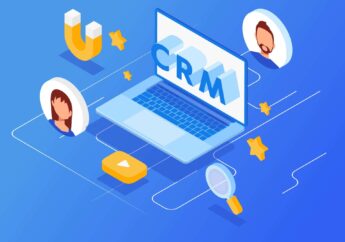How To Scale Up Your B2B SaaS Business
by Arnab Dey Sales & Marketing Published on: 21 October 2022 Last Updated on: 27 February 2025

The term B2B SaaS Business (Software as a Service) has been around for almost two decades, but it’s still one of the best business models to get started. Valued at $121.33 billion in 2020, the global SaaS market is projected to reach $702.19 billion by 2030, at a CAGR of 18.82%.
However, scaling your B2B SaaS product can be demanding. You don’t have direct contact with customers, and your sales team will be more technical than not. This article will show you how to overcome these obstacles and successfully scale your business.
Tips For Scaling Up Your B2B SaaS Business
Before you can scale up your B2B SaaS Business, you need to know your customers. Before you can scale up your business, you need to know who your customers are.

A study of B2B buyers in 2020 found that 76% of them said their expectations require more personalized attention from the solution providers based on the specific needs of the business.
1. Create A Customer Personas
Customer personas are fictional representations of your target customer. They help focus your marketing efforts on the right people and eliminate any clutter that could confuse or even turn away potential customers.
Personas also help you understand the behavior of your target audience. By creating personas, you’ll be able to identify patterns in how they make decisions and use products, which will help guide how you develop features for those audiences to meet their needs best.
For example, you can use marketing personas to change your website’s design. This can make the website more user-friendly. According to data, marketing personas made websites 2-5 times more effective and easier to use.
Finally, personas allow you to create better content for each persona group because they give marketers insight into what messages or solutions resonate with different prospects. For example, “I’m a small business owner with no time for marketing.”
If this were one of our personas, we would be able to write content explicitly tailored towards them by helping them find ways that we could save them time without sacrificing quality results from our product/service offerings.
2. Revamp Your Sales Strategy
Your sales strategy is the backbone of your entire business. Several studies show that an effective sales strategy can help improve your revenue and accelerate business growth.
Your sales process, pipeline management, and sales enablement are all determined by your strategy. This can be daunting, but with the right tools and resources, it’s easier to scale up your B2B SaaS business.
According to a survey by Forrester, 62% of the surveyed marketers said they have been able to measure a positive impact on their business since adopting an account-based marketing strategy.
With an effective strategy in place, you’ll be able to drive more qualified leads and close more deals quicker than ever.
Let’s take a look at the B2B account planning process:
- Your sales strategy should be based on customer personas. You need a clear picture of your target market to tailor your messaging accordingly. You should have one or two primary buyer personas representing who will buy from you most often.
- Your B2B SaaS Business sales strategy should include the value of your product. Without knowing exactly why someone would choose you over another competitor or solution provider, it becomes difficult for them to see what value they get from buying from you specifically. We recommend creating 3-5 key benefits for each persona type so that prospects understand what makes working with you worthwhile for them personally, professionally, etc.
- Focus on selling value instead of selling features. Value-based pricing strategies allow businesses like yours to thrive because they’re not just selling something. They’re delivering something valuable, solving problems, helping companies grow faster, etc.
You can use account planning to revamp your sales strategy. Account planning can help understand customer needs and target specific accounts that can boost your business significantly.
With the B2B account planning process, you can uncover new opportunities and identify which accounts are likely to provide the most value. Account planning helps you think strategically about where to focus your efforts and how best to engage with customers.
3. Have a Customer Support Team With Technical Knowledge of the SaaS Product
As your company grows, you’ll want to ensure you have a customer support team with technical knowledge of the SaaS product. This is especially important if there are any technical issues with the SaaS product.
Your customers need a consistent experience to buy into what you’re selling. If they can’t get help with their questions or problems, they may be turned off by your business altogether.
In a survey conducted by Sitel Group, 58% of consumers said that customer experience was the deciding factor when buying and choosing one brand over another.
An excellent way to ensure your customer support team is equipped with enough knowledge is to have them answer technical questions about your SaaS product before they begin working in that role.
Asking these B2B SaaS Business related questions will also help identify people who don’t know enough about it yet so they can be trained before they start taking calls from customers and prospects on behalf of your brand.
4. Build An Omnichannel Marketing Strategy
You should have clear goals for your business before you start. This is important for all aspects of your business, but especially marketing. If you don’t know your goals, how will you know if your marketing strategy is working?
According to research conducted by McKinsey, B2B buyers now use ten or more channels as they journey through the buying process.
To utilize an omnichannel marketing strategy, you’ll need to clearly understand your customer’s needs, wants, and behaviors.
You’ll also need to identify which channels they use most frequently and how often they will likely engage with each one. Once you know this B2B SaaS Business information, you can craft a cohesive, targeted marketing strategy for each channel.
5. Educate Customers About Your SaaS Product
Providing your customers with information about your B2B SaaS Business product is crucial to helping them understand its value.
You can educate customers about your SaaS product in many ways.
The most common are:
- Providing a demo to potential and existing users
- Creating a video tutorial explaining the basics of how to use the software
- Creating a user guide or manual that describes how all of the features work, as well as how to use them together for maximum efficiency
- Creating a knowledge base that allows users to search through past questions and answers (this may be hosted on your website or elsewhere)
6. Finetune Your Pricing Strategy For A Subscription-Based Model
In a survey by Harvey Nash, SaaS was voted the most critical technology in helping companies achieve their business goals. More and more companies are willing to invest their money in SaaS solutions to help productivity.
You need to clearly explain the value of your B2B SaaS Business and product or service and how much it costs. This will help you stand out from competitors and win over new customers.
To develop a winning pricing strategy for subscription-based businesses, start by considering your product’s value for its users. What do they get in exchange for paying? What’s the ROI on their investment?
Once you’ve identified what makes your offering unique and valuable, describe a few scenarios in which someone might purchase your product or service.
For example, “If we offer X amount of credits at $Y per month,” or “If we offer unlimited access at $Z.” Then think about how much each scenario would cost over time.
The total upfront payment plus any additional monthly fees associated with using the service. Finally, choose one price point that seems most likely to attract new customers while also providing enough profit margin so that there’s room left for growth down the line.
Conclusion
Though this article about B2B SaaS Business may be a bit technical, it’s meant to help you understand the basics of scaling your business.
It’s important to remember that the goal of scaling is to grow while staying profitable. You want to keep your customers happy while providing value so they’ll continue paying for your services.
Read Also:



































































































